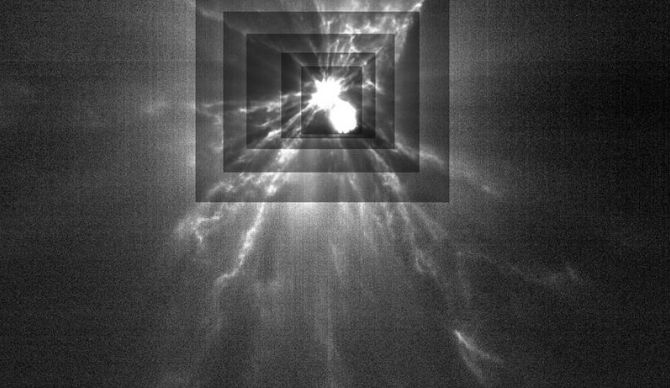NASA confirms DART Mission has altered asteroid Dimorphos’ orbit. The announcement has been made after reviewing pictures taken by NASA’s Hubble Space Telescope and the Italian Space Agency’s (ASI) LICIACube.
In a press release on Tuesday, the space agency announced that the data obtained by the DART Mission’s investigating team has confirmed that the kinetic impact by the spacecraft had indeed managed to alter the celestial body’s orbit. This is the first time in human history when a “full-scale demonstration of asteroid deflection technology” has been carried out successfully.
Also Read| Elon Musk reacts to NASA’s successful DART Mission with Will Smith-Chris Rock meme
Along with the press release, NASA has released a video captured by the ASI’s Luke Camera on its spacecraft, LICIACube, which was trailing behind the DART Mission in order to capture the impact’s effect on Dimorphos. NASA says, “The video begins with LICIACube around 500 miles away from the asteroid, passes by, and then continues to around 200 miles away. The video clearly shows the ejection of material streaming off of Dimorphos due to the impact.”
Another image shows “the plumes of ejecta streaming from the Dimorphos asteroid after NASA’s Double Asteroid Redirect Test, or DART, mission, made impact with it on Sept. 26, 2022. Each rectangle represents a different level of contrast in order to better see fine structure in the plumes. By studying these streams of material, we will be able to learn more about the asteroid and the impact process.”
Also Read| NASA’s DART Mission strikes asteroid Dimorphos: Watch
Telescope observations of the impact’s aftermath were made from South Africa and Chile to determine the degree of alteration that happened to Dirmorphos’ path post the impact with the DART Mission. Scientists have come to the conclusion that Dimorphos, which is a moonlet, has shorted its time of orbiting Didymos, its parent asteroid, by around 32 minutes. The original time taken for this revolution was 11 hours and 55 minutes.







